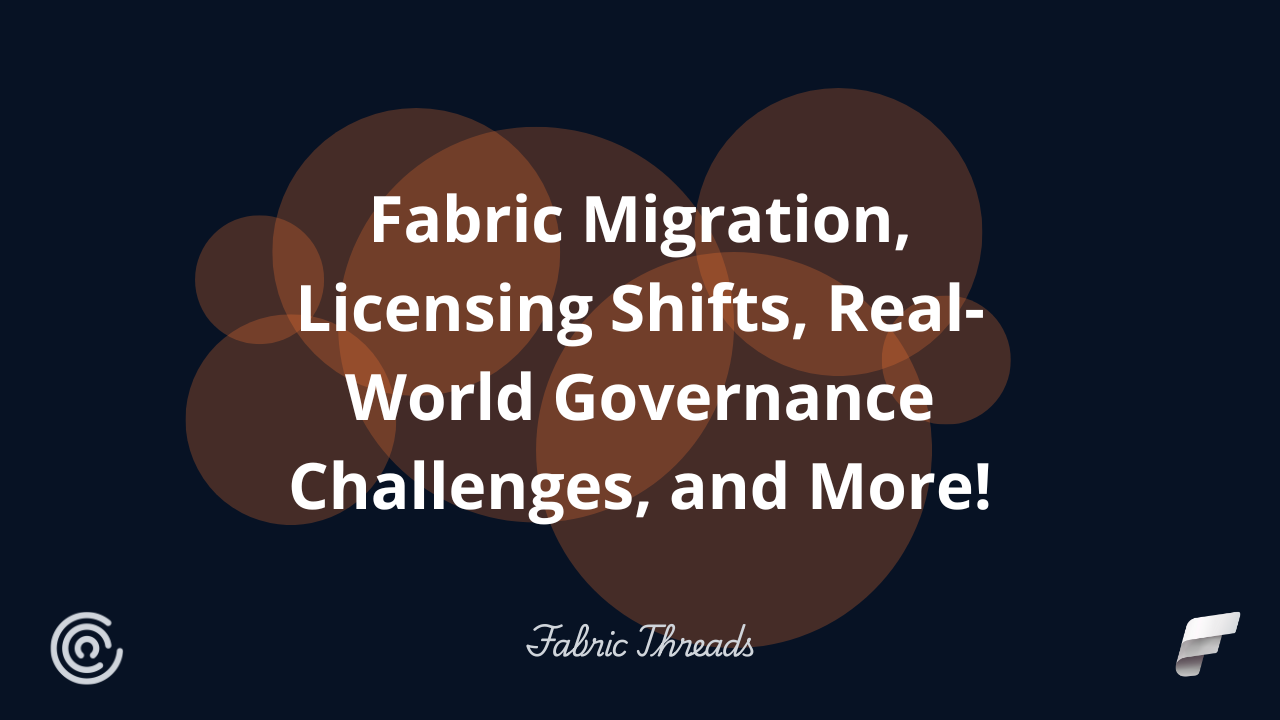As organizations look to modernize their Data & AI Strategy, Microsoft Fabric is emerging as a strategic next step. Recently, we sat down with our client, the City of Boise, to discuss what a Fabric migration could mean for their data ecosystem. From licensing transitions to everyday governance challenges, their insights reflect exactly what data leaders should consider before embarking on this journey.
By unifying data storage, engineering, reporting, and AI under a single SaaS platform, Fabric offers a streamlined, future-ready foundation for business intelligence. Yet for teams currently working with on-premises Power BI Premium and a mix of Azure resources, moving to Fabric is more than a technical shift — it requires a thoughtful cultural and strategic transformation.
From Fragmented to Unified
In traditional models, Power BI Premium typically operates alongside a patchwork of Azure resources like SQL databases, Data Factory pipelines, and Synapse, each with separate billing and separate management layers. Fabric brings all of these elements into a single, cohesive ecosystem. The benefit is clear: teams gain a one-stop shop for connecting to data sources, modeling, cleansing, and enabling business users to build reports from a governed foundation.
This consolidation simplifies your data landscape and removes the friction of managing scattered resources, allowing you to focus on delivering insights rather than maintaining infrastructure.
Licensing and Capacity: A Mindset Shift
One of the biggest changes with Fabric is how capacity is allocated and consumed. Unlike Azure-based workloads, which traditionally scale on a pay-per-use basis, Fabric operates on a fixed capacity model, where all workloads — from data engineering to reporting — draw from a shared pool of resources. Every workflow you create consumes part of that capacity.
This makes it crucial for organizations to revisit Enterprise Agreements to understand how capacity will be sized and reserved. Leaders should establish clear governance controls to prevent teams from over-consuming capacity or creating unplanned workloads. Fabric also includes features such as smoothing and throttling to help manage performance within your chosen capacity, while still offering the flexibility to enable or disable specific workloads as needed.
Governance in a Shared World
Governance remains one of the biggest challenges in any migration, and Fabric is no exception. Moving from a model where “one person owns everything” to a shared, centralized workspace means you must redefine roles, permissions, and oversight processes.
Fabric makes it easier to apply consistent governance through role-based access, workspace permissions, and integration with Microsoft Purview, now embedded directly within the platform. This means data lineage, classification, and security policies can be applied natively and consistently, giving organizations more confidence in their compliance and data quality practices.
Protecting and Standardizing Team-Created Work
In many environments today, analysts run Python scripts or other data transformations locally and manually push results into Power BI. This can create chaos and risk, especially if those team members leave.
Fabric shifts these processes to Fabric Notebooks and shared workspaces, enabling code and models to be centrally managed, versioned, and secured. Analysts gain modern, cloud-based tools while organizations gain peace of mind that intellectual property is preserved and remains team-owned.
Planning a Phased Migration
A successful Fabric migration is never a big-bang moment. It should be approached in thoughtful stages, beginning with a thorough inventory of your existing Power BI and Azure workloads. From there, prioritize a small number of high-impact workloads to pilot in Fabric, ensuring governance and capacity guardrails are in place.
As confidence grows, scale Fabric to additional workloads, carefully phasing out legacy systems. Many Azure services—such as Synapse pipelines or Data Factory assets—can migrate with minimal friction thanks to familiar interfaces in Fabric, making the transition easier than it might first appear.
Expanding Governance with Purview and Third-Party Tools
Robust governance is foundational to a successful Fabric migration. Microsoft Purview now plays an even more central role, with Purview Hub natively integrated into Fabric to streamline data discovery, classification, and lineage tracking. This means data access policies and compliance standards can be applied directly within the Fabric ecosystem, reducing risk and simplifying oversight.
Beyond Purview, Fabric also supports third-party solutions like Prophecy for master data management, running under the same capacity-based model. These tools extend governance and data stewardship without creating silos, enabling organizations to manage their data landscape holistically and transparently.
Building Skills and Better Data
A migration this significant requires knowledge-building across your teams. Consider:
- Microsoft Learn: Curated learning paths and certification exams
- Fabric Partner Community: Engagement with Fabric teams and peers
- Live Learning Sessions: Free sessions to help prepare for certification exams
- If you’re looking to enhance your Fabric skills, check out Collectiv’s 2-Day Fabric Training & Workshop.
- If your goal is to maximize your Fabric Data Lake, Collectiv’s Fabric Data Lake Implementation is worth considering.
We strongly recommend having certified team members in place before enabling Fabric workloads to build internal expertise and ensure readiness for adoption. These resources will help your analysts, engineers, and architects confidently design, build, and maintain solutions in the Fabric ecosystem.
Is Fabric Inevitable?
Fabric is rapidly becoming Microsoft’s default analytics experience. With powerful Copilot integrations, more unified data governance, and new features rolling out monthly, the strategic direction is clear. For Power BI Premium and Azure organizations, adopting Fabric is less about if and more about when.
Proactive planning will ensure the shift is smooth, sustainable, and aligned to your data strategy.
Need help building your Fabric roadmap? As a Microsoft Fabric Featured Partner, Collectiv specializes in guiding customers through practical, phased adoption. Contact our team today.




